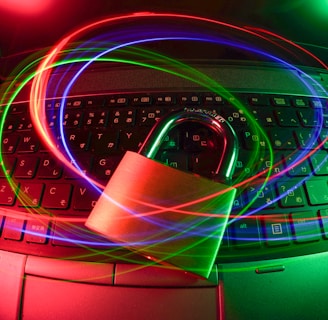Digital Forensic Analysis in Corporate Environments: A Beginner’s Guide
Imagine being able to track a cybercriminal’s every move within your company’s network. That’s exactly what digital forensic investigation offers—a powerful way to detect and prevent security incidents in corporate environments before they cause serious damage. Curious about how it works? Keep reading to discover how digital forensic analysis can become your best ally against cyber threats in your organization.
DIGITAL FORENSIC ANALYSIS


Cybersecurity is a critical aspect of any company in the digital age. Every day, organizations face constant threats such as malware, data theft, or unauthorized access.
When such an incident occurs, digital forensic analysis (also known as digital forensics) comes into play. It is a cybersecurity discipline focused on investigating:
What happened
How it happened
Who was responsible
The importance of digital forensics has grown exponentially with the rise in cyberattacks.
For example, the statistics are alarming:
17% of organizations experienced their first data breach in 2022, while 83% had more than one breach according to TERMLY.IO.
The average cost of a data breach in 2022 was estimated at $4.35 million according to TERMLY.IO.
These figures show that a single incident can be extremely costly, not only in financial losses but also in reputation damage.
In this context, digital forensics has become crucial:
It enables companies to react quickly to incidents.
It helps them understand what happened in detail.
It allows them to implement measures to prevent future attacks.
In this guide, we’ll break down digital forensic analysis, how it’s conducted step by step, the tools used, and real-world examples of how it has helped solve cybersecurity incidents. Get ready to dive into the world of corporate digital forensics in a clear and practical way!
What Is Digital Forensic Analysis and Why Is It Crucial for Business Security?
Digital forensic analysis is the investigation and reconstruction of cyber incidents through the collection, analysis, and preservation of digital evidence.
In simple terms, it is a branch of cybersecurity that seeks to uncover exactly what happened on a system or network after an incident, tracing attackers' footprints (e.g., modified files, activity logs, malware traces, etc.).
This process is carried out by specialists (often called forensic analysts), ensuring that the digital evidence remains valid and well-documented, even for legal proceedings if necessary.
Why Is Digital Forensics So Important for Businesses?
In today's corporate environment, where security incidents are commonplace, digital forensics serves multiple critical functions:
Detects hidden threats that might otherwise go unnoticed.
Determines the scale of an attack (what data was compromised, how the intruder got in, and what damage was done).
Provides insights to strengthen future security measures.
Without a proper forensic investigation, a company may be blind after an attack, unable to understand:
How attackers got in
What vulnerabilities were exploited
How to prevent a similar incident
With digital forensic analysis, an organization can:
Respond effectively – Quickly identifying details of an incident helps contain and mitigate it before it worsens.
Preserve evidence for legal action – Collected evidence can be used to sanction insider threats or cooperate with law enforcement.
Continuously improve security – Every forensic investigation reveals vulnerabilities that attackers exploited, helping companies fix weaknesses and train employees in better cybersecurity practices.
In short, digital forensic analysis acts as a cybersecurity detective for your business, protecting assets, maintaining customer trust, and preventing future incidents.
Stages of Digital Forensic Analysis: Identification, Collection, Analysis, and Reporting
The corporate digital forensic process is typically divided into four key stages. Each stage is crucial to ensuring a rigorous and useful investigation.
1️⃣ Identification:
This is the initial detection of a suspicious incident.
Companies may notice red flags such as antivirus alerts, unusual network behavior, or user reports.
In this phase, forensic analysts determine the scope of the attack and decide whether an investigation is needed.
2️⃣ Evidence Collection:
Once an incident is confirmed, the next step is to collect and preserve digital evidence.
This involves gathering data from multiple sources:
🔹 Forensic disk images
🔹 System logs
🔹 Email records
🔹 Network traffic captures
🔹 Memory (RAM) dumpsChain of custody protocols ensure that the evidence remains unaltered and legally admissible.
3️⃣ Analysis:
Forensic specialists examine the collected data to reconstruct what happened.
This includes identifying:
✔️ Modified or deleted files
✔️ Installed malware
✔️ Compromised user accounts
✔️ Unusual access logs
✔️ Suspicious network trafficAdvanced forensic techniques recover deleted files, decrypt encrypted data, and correlate multiple data sources to provide a clear picture of the incident.
4️⃣ Reporting & Presentation:
Findings are compiled into a forensic report detailing:
✔️ What happened
✔️ How, when, and who was involved
✔️ Collected evidence (screenshots, logs, file hashes, etc.)
✔️ Recommendations for strengthening securityIf necessary, this report is presented to management, security teams, or even law enforcement.
Skipping or mishandling any of these steps can result in lost evidence or invalid findings, which is why companies often work with forensic experts or have well-defined incident response policies.
Essential Tools for Digital Forensic Analysis
To conduct a successful forensic investigation, analysts rely on specialized tools to collect and examine digital evidence. Here are some of the most essential tools used in corporate environments:
EnCase – A widely recognized commercial forensic suite for disk imaging, file recovery, and forensic reporting.
FTK (Forensic Toolkit) – Provides fast indexing, email analysis, password recovery, and Windows registry analysis.
Autopsy – A free and user-friendly forensic tool for disk and file analysis.
Wireshark – The go-to tool for network traffic capture and analysis, helping detect malicious communications.
Volatility – A RAM forensics framework for analyzing malware and fileless attacks that leave minimal traces.
Conclusion
Digital forensic analysis has become an indispensable part of corporate cybersecurity. Key Takeaways:
✔️ It helps organizations investigate incidents, track cybercriminals, and prevent future attacks.
✔️ Following forensic procedures properly ensures legally admissible evidence.
✔️ Using specialized forensic tools allows companies to conduct in-depth investigations.
Preparation is key—companies should:
Develop incident response plans
Train employees in cybersecurity best practices
Have forensic experts or consultants available when needed
Don’t wait until your company is the next cyberattack victim! Start reviewing your security posture now, conduct incident response drills, and ensure your team is ready to investigate and contain threats effectively.
#Cybersecurity #DigitalForensics #IncidentResponse #CyberThreats #ForensicInvestigation